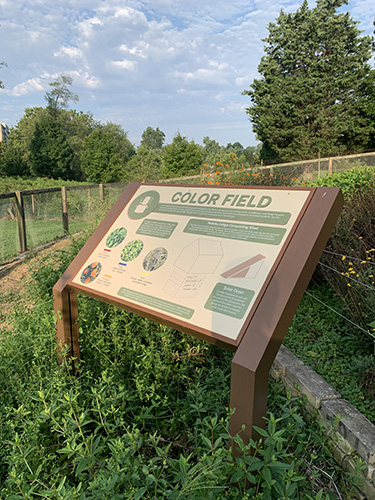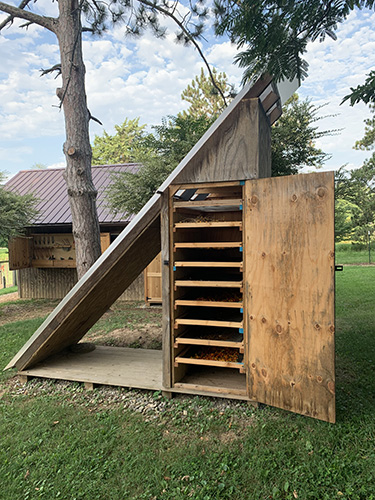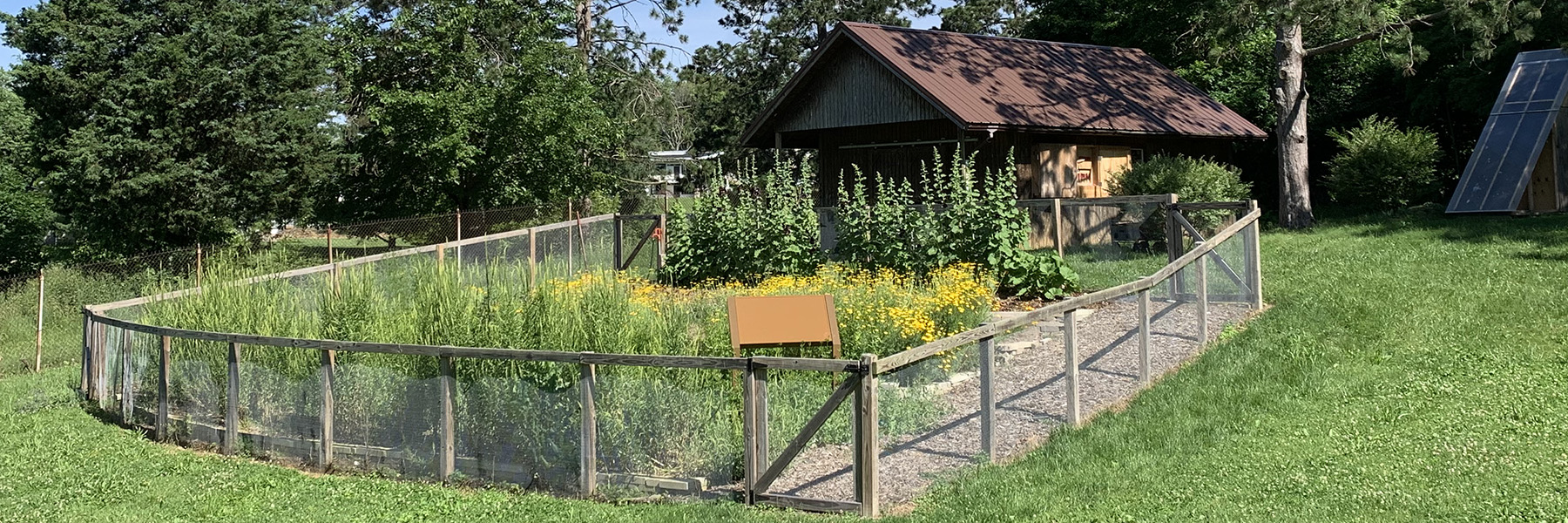Color Field is an annual and perennial natural dye garden run by the Fibers Area faculty in IU’s Eskenazi School of Art, Architecture, and Design to grow colors for class projects. Dye plants are cultivated to reconnect students, faculty and community members with the roots of color through direct investment in the growing of natural dyes.

We grow a variety of plants at Color Field for their natural dye properties, using different parts of the plants to produce color. Madder (roots harvested every 3-5 years); Indigo (leaves harvested July – October); Weld (flowers, stalks, and stems harvested in late spring); Marigold (flowers harvested August – October).

The garden includes a solar dryer to preserve the dye plants for use throughout the year in the classroom as well as a nedoko, or indigo composting shed. The harvested indigo plants are dried and their leaves stripped from the stems. Those dried leaves are composted for 100 days, and the shed has a clay floor built on layers of gravel, sand, rice hulls that wick away moisture from the composting indigo leaves. After composting, the concentrated indigo leaves are fermented in wood-ash lye to produce a range of blues.
Color Field has been made possible with generous support from Indiana University’s College of Arts and Sciences Ostrom Grants Program in partnership with Hilltop Garden and Nature Center, the Eskenazi School of Art, Architecture, and Design, and the work of Fibers Area faculty, students, and community volunteers.


